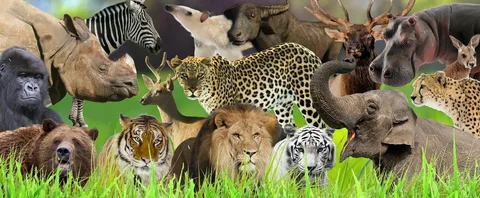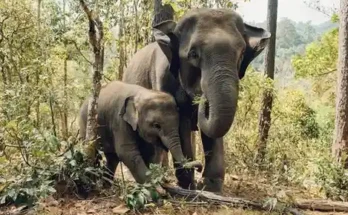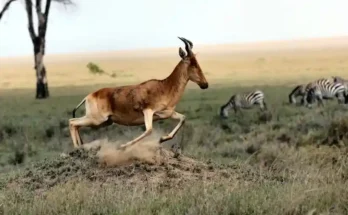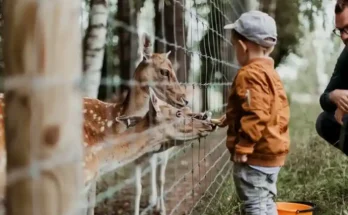From the haunting howl of a lone wolf under a full moon to the delicate hum of a hummingbird’s wings, animals compose the silent symphony of our natural world. Their stories are as ancient as time and as diverse as the landscapes they inhabit. Each creature, whether feathered, furred, or finned, plays a unique part in the living puzzle of Earth. But behind every pawprint and wingspan lies a tale that reaches far deeper than survival—it’s a story of emotion, communication, intelligence, and interconnectedness.
Let’s embark on a journey through the wild—a glimpse into the hidden lives of animals that share our planet and, often, shape it more than we know.
The Architects of the Wild:
While often overlooked or even reviled, insects are the quiet laborers of the planet. Ants build complex underground civilizations with chambers, ventilation, and farms for fungus. Termites, although sometimes a homeowner’s nightmare, construct towering mounds with natural air-conditioning systems. Bees, with their intricate hives and sophisticated dances, ensure the pollination of plants that sustain the food web. These tiny beings are often the foundation of entire ecosystems, balancing life cycles and maintaining the health of soil, plants, and even predators who rely on them.
Birds are nature’s storytellers. Migrating thousands of miles with astonishing precision, they connect continents and climates, spreading seeds and stories across the world. The albatross can glide over oceans for weeks without landing, while the arctic tern experiences two summers a year by flying from pole to pole. Birds aren’t just pretty creatures with songs and feathers—they are indicators of environmental health. Their numbers and movements often reflect changes in climate and habitat long before we do.
Masters of Adaptation:
-
Desert Survivors and Arctic Kings
Animals have mastered the art of survival in the harshest of environments. In the scorching deserts, fennec foxes dissipate heat through their enormous ears, while camels use fatty humps not to store water, but to regulate temperature. In contrast, polar bears rely on black skin beneath white fur to absorb the faintest warmth of a frigid sun.
This adaptability tells us that evolution is not just a scientific concept—it’s a living, breathing force sculpting each claw, feather, and tail for purpose and endurance.
-
Urban Wildlife
Not all wild animals live far from humans. Some thrive among us—foxes dart through alleys, raccoons tiptoe across rooftops, and peregrine falcons nest atop skyscrapers. Urban wildlife is not just about coexistence but adaptation. They navigate traffic, trash bins, and towering buildings with uncanny cleverness, often outperforming their rural counterparts in problem-solving.
Their success is a testament to resilience, and a subtle reminder that the wild doesn’t end where the pavement begins.
Animal Intelligence:
-
Toolmakers and Problem-Solvers
For a long time, humans believed tools were what separated us from animals. Then came the crows using twigs to extract insects, sea otters smashing shellfish with stones, and elephants using branches to swat flies. Chimpanzees learn by watching, dolphins use sponges to protect their noses, and octopuses escape enclosures with astonishing cleverness.
These aren’t flukes or tricks—they’re signs of cognition. Problem-solving, planning, and even empathy are all parts of the mental toolkit many animals carry.
-
Communication Beyond Words
Whales sing songs that travel for hundreds of miles. Elephants communicate through seismic vibrations. Prairie dogs have specific warning calls not just for different predators, but for predator types—like a tall human in red versus a short one in blue.
While we may not speak their language, it’s increasingly clear that animals are fluent in their own rich, symbolic, and emotionally layered forms of communication.
Emotions in the Animal Kingdom:
Contrary to old beliefs, animals do feel—and often deeply. Elephants have been observed mourning lost loved ones, gently touching bones with their trunks. Dogs dream, and studies show they experience jealousy and affection. Orcas carry their dead calves for days, refusing to let go. Play is another window into emotion. Young ravens slide down snowy hills for fun, and dolphins play games with pufferfish. These aren’t just rehearsals for adulthood—they’re expressions of joy and wonder.
Wolves are not ruthless loners, but loyal pack animals who raise young communally. Penguins take turns keeping eggs warm through brutal Antarctic winters. Even creatures we assume are cold or primitive—like reptiles—can exhibit parental care, and in some cases, protective instincts.
The animal kingdom is rich in relationships that mirror our own in complexity and tenderness.
The Invisible Impact of Animals:
Beavers alter landscapes by building dams, creating wetlands that become havens for other species. Elephants knock down trees that allow grasses to flourish, maintaining the savannah’s balance. Even tiny krill influence global carbon cycles by feeding on phytoplankton and redistributing nutrients in the ocean.
Animals shape the world physically and biologically. Without them, entire systems collapse.
Animals have always played roles in human stories. From Anansi the Spider to the mighty thunderbird, cultures have revered animals as symbols of wisdom, fear, strength, and guidance. Totems, zodiac signs, and folklore carry the imprint of animal spirits—reminders of how deeply intertwined our fates truly are.
In many indigenous traditions, animals are not resources but relatives—beings with spirits and rights, deserving respect.
Conclusion:
As we lose species at an alarming rate and transform wild spaces into cities and farms, the importance of animals becomes ever more pronounced. They are not just part of our world; they are co-authors of it. They whisper secrets about survival, resilience, intelligence, and the breathtaking beauty of existence.
If we pause long enough to listen—to the rustle in the leaves, the chirp at dawn, the splash in the stream—we’ll hear the voices of creatures who have walked this Earth long before us, and who deserve to walk it long after.
Because in saving animals, we’re not just preserving biodiversity—we’re preserving the soul of the Earth itself.




